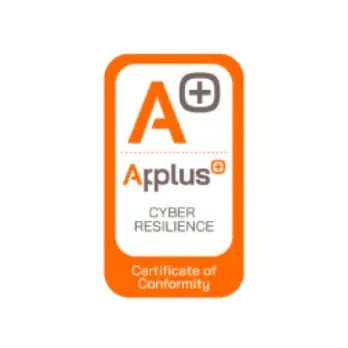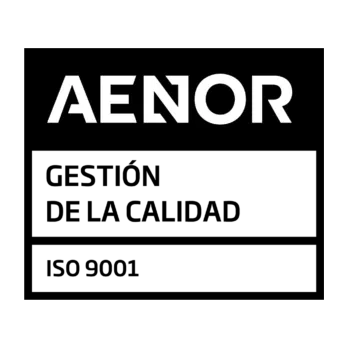In the field of physical security, there is no vault more famous than Fort Knox, located in Kentucky, United States. This facility, officially known as the United States Bullion Depository, is regarded as the most secure vault in the United States and one of the most iconic in the world. Its purpose is to safeguard a large part of the U.S. gold reserves, along with other sensitive assets of strategic value. Although many of its details remain classified, what is known and what can be inferred from a technical perspective allow us to understand why Fort Knox has become a benchmark in high-security engineering. At Arcas Gruber, European leaders in the manufacturing of vaults, safes and Euro-grade safes, we apply these same principles in international projects across Europe, Saudi Arabia, and worldwide. For a comparative analysis of other emblematic facilities, see our guide on the 10 most secure vaults in the world.
Subterranean Design and Structural Engineering
Fort Knox’s vault lies beneath a granite and concrete superstructure. The choice of location and construction method follows the logic of redundant resistance and strategic concealment:
- Massive walls more than two meters thick, consisting of high-strength concrete with reinforced steel bars and aggregates of superior hardness.
- Granite foundation, which naturally resists seismic activity and mechanical intrusion attempts.
- Monolithic integration between walls, ceiling, and foundation, eliminating weak joints or separations.
- Earth coverage, which adds natural mass to resist explosives or heavy machinery attacks.
This combination of natural geology and engineered reinforcement makes Fort Knox not just a building, but a bunker designed for indefinite resistance.
Materials and Critical Reinforcements
The materials used in the vault are optimized to withstand mechanical, thermal, and combined attacks. Although classified, it is technically reasonable to expect:
- Ultra-high-strength concrete (>120 MPa) with metallic fibers, designed to dissipate vibrations and resist heavy drilling.
- Refractory compounds that protect against thermal lances and oxy-fuel torches, slowing down any attempt at thermal cutting.
- Manganese and carbide plates protecting locks and bolt areas, capable of fracturing drill bits and deflecting trajectories.
- Blast-resistant geometries designed to absorb shock waves and prevent localized deformations.
The philosophy is not to be “indestructible”, but to multiply resistance time, ensuring that detection and operational response are effective long before a breach occurs.
The Vault Door: Mass and Redundant Locking
The entrance to the vault is protected by one of the heaviest and most secure doors in existence. Technical details include:
- Door mass exceeding 20 tons, ensuring structural stability and inertia against forceful attacks.
- Multidirectional boltwork, with cylindrical bolts engaging on all four sides of the frame.
- Glass and mechanical relockers, which automatically trigger secondary blocks if tampering or drilling is detected near the lock.
- Overlap geometry between the door leaf and the frame, eliminating the possibility of using external levers.
This is an example of the fail-secure principle: in case of attack, the result is not opening, but an irreversible lock.
Locks and Authentication Protocols
Fort Knox employs a multi-layered authentication model:
- Multiple high-security locks that require several officials to be present simultaneously.
- Split custody of keys and codes, ensuring no individual can open the vault alone.
- Time delays and time windows that restrict access to specific schedules.
- Auditable processes, with complete records of every attempt to access.
This approach follows the international principle of split knowledge: distributing access credentials among multiple parties to eliminate single points of failure.
Sensors and Real-Time Detection
Technical reports confirm that Fort Knox integrates real-time detection systems, comparable to those used in the most advanced European standards:
- Seismic sensors tuned to identify drilling, cutting, or vibration patterns.
- Thermal sensors that detect abnormal increases in temperature caused by thermal attacks.
- Micro-switches and magnetic contacts installed on every bolt to verify the complete locking status.
- Redundant CCTV, with continuous monitoring from secure command centers.
The system is supported by UPS and autonomous generators, ensuring full operability even in case of power outages or sabotage attempts.
Physical Environment and Military Protection
Fort Knox is not just a vault: it is a military installation. Its environment adds another layer of security:
- Armed military personnel permanently stationed around the facility.
- Controlled perimeter with fences, barriers, and exclusion zones.
- Air defense systems protecting the airspace above the facility.
- Multiple access stages with checkpoints and physical barriers before reaching the vault itself.
This combination of physical engineering and military doctrine makes Fort Knox a reference point for deterrence.
Operational Protocols
Operational security is as critical as physical engineering. Fort Knox applies:
- Continuous supervision of access, both on-site and remotely.
- Preventive maintenance to ensure mechanical tolerances, calibration of sensors, and functional redundancy.
- Audit trails of every access attempt or system manipulation.
- Restricted access windows defined by schedules and supervision protocols.
Without operational discipline, even the most advanced vault could be compromised. At Fort Knox, physical and procedural security reinforce each other.
Comparative International Perspective
Compared to the Bank of England in London or the Banco de España in Madrid, Fort Knox stands out for its military protection and its symbolic role as a deterrent. From a technical perspective, its walls, doors, and detection systems would be equivalent to the highest grades of UNE EN 1143-1 certification, while its locks meet criteria comparable to EN 1300 standards.
At Arcas Gruber, we apply these principles to our Euro-grade safes and vaults, exported worldwide for banks, governments, and private clients seeking uncompromising protection.
Arcas Gruber: Bringing Fort Knox Principles to Modern Projects
Fort Knox is more than a vault: it is an engineering icon. At Arcas Gruber, we replicate its philosophy in our safes, Euro-grade certified safes and vaults. We integrate structural design, multi-layered materials, relockers, advanced sensors, and operational protocols to achieve solutions that meet the highest international standards. With manufacturing in Europe and projects in Saudi Arabia, Latin America, and across the globe, we bring the Fort Knox approach to organizations worldwide.
Conclusion
The Fort Knox vault, in Kentucky, is the most secure vault in the United States and one of the most iconic in the world. Its walls of reinforced concrete, its 20-ton vault door with relockers, its seismic and thermal sensors, and its military protection make it a model of absolute security. At Arcas Gruber, we are inspired by this benchmark to continue developing safes, Euro-grade safes and vaults exported globally. For a broader perspective, see our comparative guide of the 10 most secure vaults in the world.
















